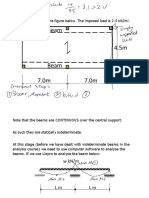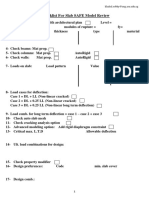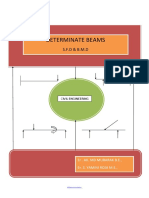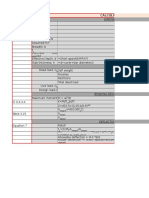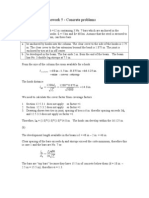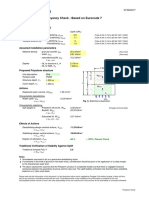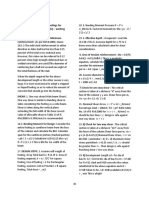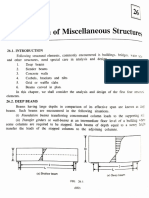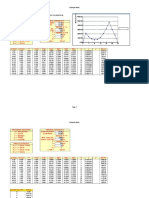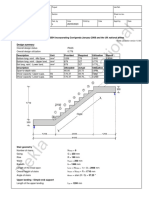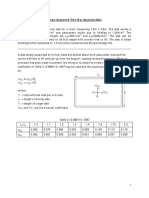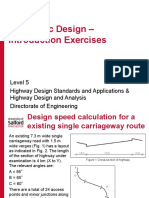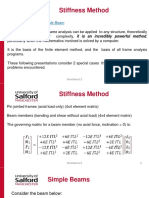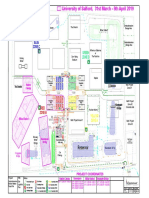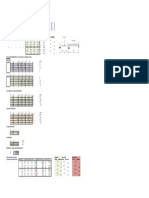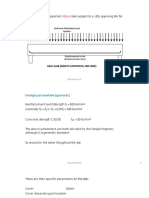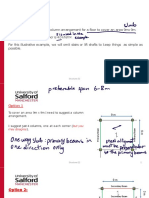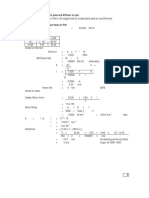0% found this document useful (0 votes)
154 views28 pagesExample: Design The Beams in The Figure Below. The Imposed Load Is 4.0 KN/M
The document provides details for designing beams to support a 5m by 8m simply supported slab with an imposed load of 4 kN/m2. Key parameters include a reinforcement yield strength of 500 MPa, concrete strength of 30 MPa, and slab thickness of 200mm. The maximum shear force applied to the beams is calculated as 40.6 kN/m, accounting for a 15% increase to allow for self-weight. A 600mm deep beam is selected, with reinforcement and shear link requirements calculated and checked against code requirements. Increasing the reinforcement to 5 bars satisfies deflection criteria. The beam design is then complete.
Uploaded by
Sarah HaiderCopyright
© © All Rights Reserved
We take content rights seriously. If you suspect this is your content, claim it here.
Available Formats
Download as PDF, TXT or read online on Scribd
0% found this document useful (0 votes)
154 views28 pagesExample: Design The Beams in The Figure Below. The Imposed Load Is 4.0 KN/M
The document provides details for designing beams to support a 5m by 8m simply supported slab with an imposed load of 4 kN/m2. Key parameters include a reinforcement yield strength of 500 MPa, concrete strength of 30 MPa, and slab thickness of 200mm. The maximum shear force applied to the beams is calculated as 40.6 kN/m, accounting for a 15% increase to allow for self-weight. A 600mm deep beam is selected, with reinforcement and shear link requirements calculated and checked against code requirements. Increasing the reinforcement to 5 bars satisfies deflection criteria. The beam design is then complete.
Uploaded by
Sarah HaiderCopyright
© © All Rights Reserved
We take content rights seriously. If you suspect this is your content, claim it here.
Available Formats
Download as PDF, TXT or read online on Scribd
/ 28
